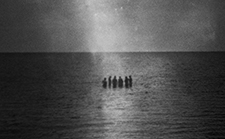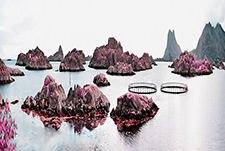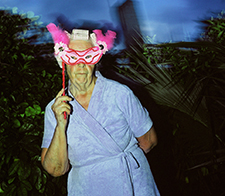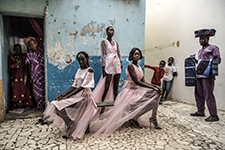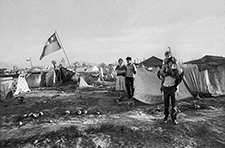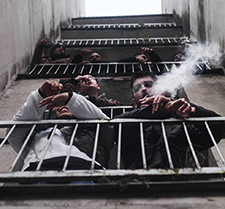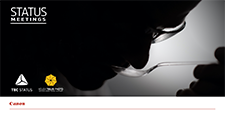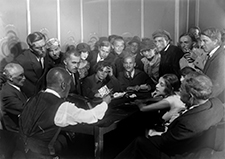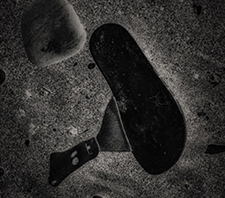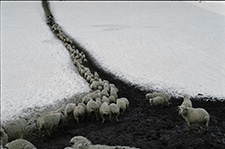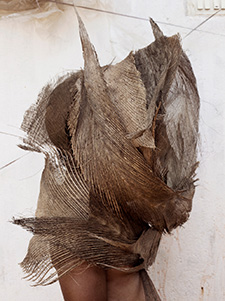Artarea Gallery
Fatimazohra Serri / L4artiste
Rwinalife
Mourad Fedouache
Artarea Gallery hosts modern art and photo exhibitions. In addition, the place is famous for public lectures and cultural events.
SOURTNA
Moroccan photographers of today and tomorrow
Curated by: Carine Dolek & Yassine Alaoui Ismaili, Yorias
« Sourtna, Moroccan photographers of today and tomorrow », is a collective exhibition produced for the opening of the State Museum of Photography, in Rabat, in January 2020, curated by Yoriyas and Carine Dolek, putting together sixteen recognized authors, emerging photographers, as well as promising young eyes, to shed light on their coherence, dynamics and complementarity and to encourage transmission between and within generations.
Therefore, this exhibition is a historical opportunity. In recent years, more and more Moroccan photographers are working and expressing themselves, more and more exhibition places are welcoming them and drawing public. There is not yet a School of Moroccan Photography, but cultural actors and creators have the will and the desire to lay its foundation.
These dynamics made an exhibition like this possible. The exhibited authors have a common feeling of commitment. We all are aware that it is our mission to capture the situations, the colours, the places, the people, and the moments of Moroccan society. We are convinced that visual development is part of social and economic development of a country. It means that Morocco is able to express itself in images, that we are capable of producing, defending, sharing, showing and seeing images.
This photography scene showcases a version of Morocco as seen by Moroccan photographers for Moroccan as well as international public and provides rebalanced forces that allow pictures of each other to coexist.
Sourtna means « Our pictures » in darija, the Moroccan Arabic dialect.
We present here four of them : Mourad Fedouache, Ali El Madani, Rwinalife, Fatimazohra Serri and Ismail Zaidy, L4artiste. This show is especially created for the Kolga Tbilisi Photo Week, with a new editing and a new set up for the four works and, for the first time, a photographic exhibition of Rwinalife, previously shown as a video installation.
Artarea Gallery hosts modern art and photo exhibitions. In addition, the place is famous for public lectures and cultural events.
SOURTNA
Moroccan photographers of today and tomorrow
Curated by: Carine Dolek & Yassine Alaoui Ismaili, Yorias
« Sourtna, Moroccan photographers of today and tomorrow », is a collective exhibition produced for the opening of the State Museum of Photography, in Rabat, in January 2020, curated by Yoriyas and Carine Dolek, putting together sixteen recognized authors, emerging photographers, as well as promising young eyes, to shed light on their coherence, dynamics and complementarity and to encourage transmission between and within generations.
Therefore, this exhibition is a historical opportunity. In recent years, more and more Moroccan photographers are working and expressing themselves, more and more exhibition places are welcoming them and drawing public. There is not yet a School of Moroccan Photography, but cultural actors and creators have the will and the desire to lay its foundation.
These dynamics made an exhibition like this possible. The exhibited authors have a common feeling of commitment. We all are aware that it is our mission to capture the situations, the colours, the places, the people, and the moments of Moroccan society. We are convinced that visual development is part of social and economic development of a country. It means that Morocco is able to express itself in images, that we are capable of producing, defending, sharing, showing and seeing images.
This photography scene showcases a version of Morocco as seen by Moroccan photographers for Moroccan as well as international public and provides rebalanced forces that allow pictures of each other to coexist.
Sourtna means « Our pictures » in darija, the Moroccan Arabic dialect.
We present here four of them : Mourad Fedouache, Ali El Madani, Rwinalife, Fatimazohra Serri and Ismail Zaidy, L4artiste. This show is especially created for the Kolga Tbilisi Photo Week, with a new editing and a new set up for the four works and, for the first time, a photographic exhibition of Rwinalife, previously shown as a video installation.
Artarea Gallery hosts modern art and photo exhibitions. In addition, the place is famous for public lectures and cultural events.
SOURTNA
Moroccan photographers of today and tomorrow
Curated by: Carine Dolek & Yassine Alaoui Ismaili, Yorias
« Sourtna, Moroccan photographers of today and tomorrow », is a collective exhibition produced for the opening of the State Museum of Photography, in Rabat, in January 2020, curated by Yoriyas and Carine Dolek, putting together sixteen recognized authors, emerging photographers, as well as promising young eyes, to shed light on their coherence, dynamics and complementarity and to encourage transmission between and within generations.
Therefore, this exhibition is a historical opportunity. In recent years, more and more Moroccan photographers are working and expressing themselves, more and more exhibition places are welcoming them and drawing public. There is not yet a School of Moroccan Photography, but cultural actors and creators have the will and the desire to lay its foundation.
These dynamics made an exhibition like this possible. The exhibited authors have a common feeling of commitment. We all are aware that it is our mission to capture the situations, the colours, the places, the people, and the moments of Moroccan society. We are convinced that visual development is part of social and economic development of a country. It means that Morocco is able to express itself in images, that we are capable of producing, defending, sharing, showing and seeing images.
This photography scene showcases a version of Morocco as seen by Moroccan photographers for Moroccan as well as international public and provides rebalanced forces that allow pictures of each other to coexist.
Sourtna means « Our pictures » in darija, the Moroccan Arabic dialect.
We present here four of them : Mourad Fedouache, Ali El Madani, Rwinalife, Fatimazohra Serri and Ismail Zaidy, L4artiste. This show is especially created for the Kolga Tbilisi Photo Week, with a new editing and a new set up for the four works and, for the first time, a photographic exhibition of Rwinalife, previously shown as a video installation.
View Space

View Space

View Space




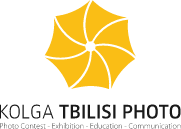

 Programme
Programme
 Programme
Programme
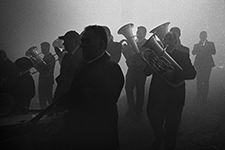
 Georgian National Museum
Georgian National Museum